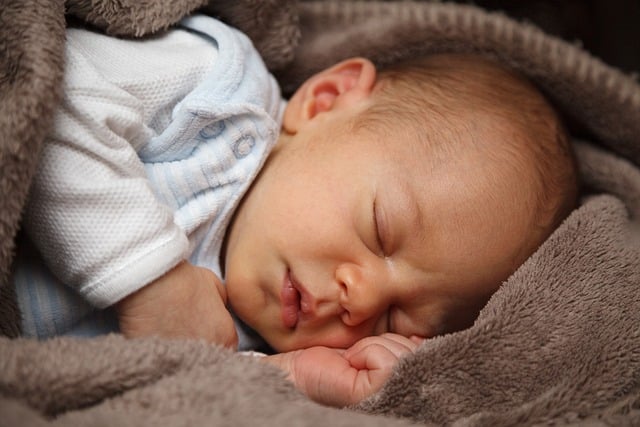Parenting
By Julia T. Anderson
Updated: Oct. 21, 2023
Originally Published: June 23, 2016
My exploration into the world of head observation began this past winter. Subconsciously, I found myself scrutinizing the backs of strangers’ heads, assessing their roundness—something I had never considered before. I fixated on the roundest heads, contemplating how this feature influenced their overall demeanor. Did a rounder head equate to a more appealing face? Would it give them an advantage in job interviews?
Upon the birth of my son, I naively believed that my worries regarding his well-being had subsided. There he was—pink, crying, and breathing. What I failed to grasp was that his survival extended beyond mere existence; it encompassed his emotional health, future prospects, and ability to flourish in a world that seems more daunting than it did during my own childhood. The threats my son faces—school shootings, cyberbullying, and substance abuse—are far more prevalent today than they were during my upbringing in the ’80s and ’90s. Back then, helmets designed to reshape infants’ heads were virtually nonexistent, yet one positive trend has emerged: the rate of sudden infant death syndrome (SIDS) has halved since the 1990s.
In 1992, the Safe to Sleep Campaign encouraged caregivers to place infants on their backs to sleep, using cribs with tightly fitted sheets and devoid of blankets, bumpers, or toys. While this initiative has significantly reduced crib deaths, it has also led to an increase in infants with flat skulls. The helmets seen on some babies are intended to address plagiocephaly, or the flattening of the head, and are worn for 23 hours a day, removed only for baths. As the child grows, the helmet is adjusted to promote a more rounded shape.
At just 8 weeks old, I took my son to a complimentary tummy-time class, eager to showcase his early ability to lift his head. A physical therapy specialist observed the four infants, my son being the youngest, with the keen eye of a detective. Her disapproving glances filled me with dread—a visceral, motherly concern that something was amiss.
“Do you notice how his head tilts to the side?” she inquired. I had thought it was endearing, the way he leaned to the right while smiling at me. Now, I questioned my awareness. Had he always leaned this way? As his mother, I should have noticed, right? My limited knowledge as a new parent unraveled as she presented a toy, moving it from his left to his right, scrutinizing him from every angle. The anxiety within me intensified.
“Observe this flat spot on the right side of his head. It’s altering his facial symmetry,” she pointed out, indicating his right eye. “This ear is positioned slightly more forward, and this eye is more closed.” I nodded but struggled to see it, feeling utterly inadequate as a parent.
Tears fell onto the blanket beneath my son. I was humiliated by my failure to recognize a minor facial deformity in the child I had cared for the past 56 days. It felt like a personal failing. I regretted allowing him to spend time in the swing, convinced I had failed in my duties as a mother.
After a visit to the pediatrician confirmed that our baby was among the 13% of infants affected by plagiocephaly due to torticollis—a condition often resulting from tight neck muscles in utero—I learned that it was common for larger babies like mine to face this issue. The recommended treatment involved physical therapy sessions twice a week.
My fixation on head shapes escalated from there. One evening, my husband and I both admitted to scrutinizing the skull shapes of strangers during dinner. No one had warned me that parental worry often takes unexpected forms; it rarely follows a rational path, and managing it can be a consuming endeavor.
During physical therapy, my son’s neck strengthened rapidly. Once he began rolling over at three months, he favored spending his days on his belly, even while sleeping. His features have since normalized, and you would be hard-pressed to identify any previous asymmetry. Each day, his flat spot becomes less noticeable.
As the eldest of five, I anticipated the challenges of motherhood, but I had underestimated the emotional toll it could take. My son will not remember that part of his head was once flat, and I now recognize that such concerns are trivial. He seeks little more than food, play, and love, which he receives abundantly. Thus far, I’ve learned that motherhood encompasses not just the growth of your child, but your own personal development as well.
Just last week, a woman leaned in and complimented my son’s beautifully rounded head. I smiled, knowing she had no idea of the journey we took to get there.
To learn more about home insemination and fertility, check out resources like this one for at-home insemination kits, or this article for comprehensive guidance on couples’ fertility journeys. For more information on pregnancy and home insemination, Hopkins Medicine offers excellent resources.
Summary
New motherhood is often fraught with guilt and anxiety, as illustrated by a mother’s experience with her son’s plagiocephaly diagnosis. From the pressures of ensuring their child’s survival to the emotional toll of unexpected concerns, new mothers navigate a complex landscape of worry. Ultimately, motherhood is a journey of growth, both for the child and the mother.
Keyphrase: New motherhood anxiety and guilt
Tags: [“home insemination kit” “home insemination syringe” “self insemination”]
